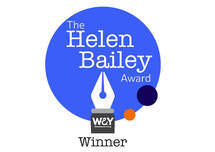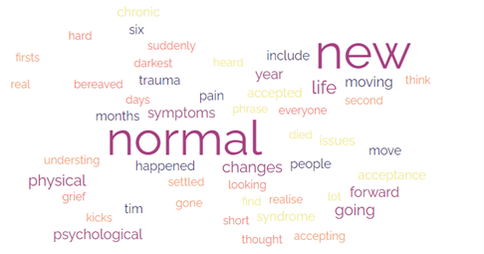|
After Tim died, and after the numbness worse off, I felt that I had to live my life to the full because he wasn’t here anymore. It’s made me realise that life is short, and I’ve taken opportunities, tried things that I might not have done otherwise, and put myself well outside of my comfort zone. And I’ve loved some of them, liked most of them, and found a few I’d rather never touch again with a very long bargepole.
However, this can mean we put ourselves under too much pressure to do things ‘for’ our person, and if it doesn’t work out, we feel guilty or a failure. Grieving can involve these feelings already, and we don’t need more of them. I’m still aiming to live my life to the full, but now I’m doing it for me. Because life is too short.
0 Comments
At the weekend, I read a letter in the Guardian to Pamela Stephenson Connolly entitled I don’t like the way my partner smells and it reminded me how much I loved your smell. I would nuzzle into your neck and breathe you in. Before you moved in with me, when you visited and then went back home, I would fall asleep hugging your pillow. I knew when you were stressed or low because your smell changed. When you died, I lay curled up with you on the bedroom floor taking in as much of your smell as I could. I wore your jumper for days after you died.
After Tim died, I heard the phrase ‘the new normal’ a lot. That I would find my ‘new normal’. That people settled into their ‘new normal’. That the ‘new normal’ kicks in after six months when you realise that it’s all real, or in the second year when all the firsts are over. But what is the new normal?
I think it’s about understanding the changes that we have gone through, accepting what has happened, and looking at how we move forward. This is about how it’s happened for me. It’s not the same for everyone, and for people in the darkest days of grief, the thought of a new normal may be too hard. The new normal: Physical and psychological The trauma of being bereaved, whether it’s suddenly or after a short or long illness, changes us physically and psychologically. Physical symptoms include headaches, chest pain, muscle and joint aches, sleep issues and immune system issues. Psychological changes include brain fog, flashbacks, panic attacks, dissociation and hyperarousal. Trauma also increases the risk of self-harm and suicidal feelings, and of irritable bowel syndrome (IBS), fibromyalgia and chronic pain, and chronic fatigue syndrome (CFS/ME). These changes don’t always last forever – for me, the physical symptoms eased after six months or a year, and the worst of the psychological symptoms after a year or two. It’s important that we look after ourselves, and this isn’t about fluffiness and bubble baths. It’s about genuinely being kind to ourselves, and about taking proper care of our mental and physical health. The new normal: Acceptance The new normal can be about acceptance, and this was significant for me. I accepted that this was my life now. That things were never going to be the same again. For a while it was just about keeping going, and putting one foot in front of the other. The next phase was reclaiming a space and a life for myself – I cleared and redecorated, I went back to university, I started The Widow’s Handbook. I accepted that grieving was a long-term thing. That I wasn’t going to ‘get over it’, or ‘move on’. That it was something that I was going to walk alongside. I also gave myself permission to feel happy again. The new normal: Moving forward Ever since I saw this brilliant TED talk from Nora McInerny, I have talked about ‘moving forward’ not ‘moving on’, because I have taken Tim with me into my new life. While it’s not the life I expected or planned for, it’s the life I have and it’s a life I like. Bereavement is what happens to you; grief is what you feel; mourning is what you do. Dr Richard Wilson The Whirlpool of Grief model was created by Dr Richard Wilson, who worked with parents who had lost a child. The idea behind the Whirlpool of Grief is that we are pottering along the River of Life, when we are swept down the Waterfall of Bereavement. It feels like we have been swept off a cliff, and we are hurtling down, out of control, numb, in shock and perhaps in denial.
We land in a whirlpool of grief, where we feel lost, emotionally disorganised and falling apart, and as we get swept round, we might go through the same things again and again. We might get battered on the rocks, where we feel the physical symptoms of grief. We might get washed into shallow water where we can rest, or onto the banks, where we experience the fog of widow brain, and we might feel that we are stuck in grief. As we move into back into the River of Life as it flows out of the whirlpool, we mourn, and we move forward (but not move on) into our new normal. |
AuthorI was widowed at 50 when Tim, who I expected would be my happy-ever-after following a marriage break-up, died suddenly from heart failure linked to his type 2 diabetes. Though we'd known each other since our early 20s, we'd been married less than ten years. Archives
July 2024
Categories
All
|





 RSS Feed
RSS Feed